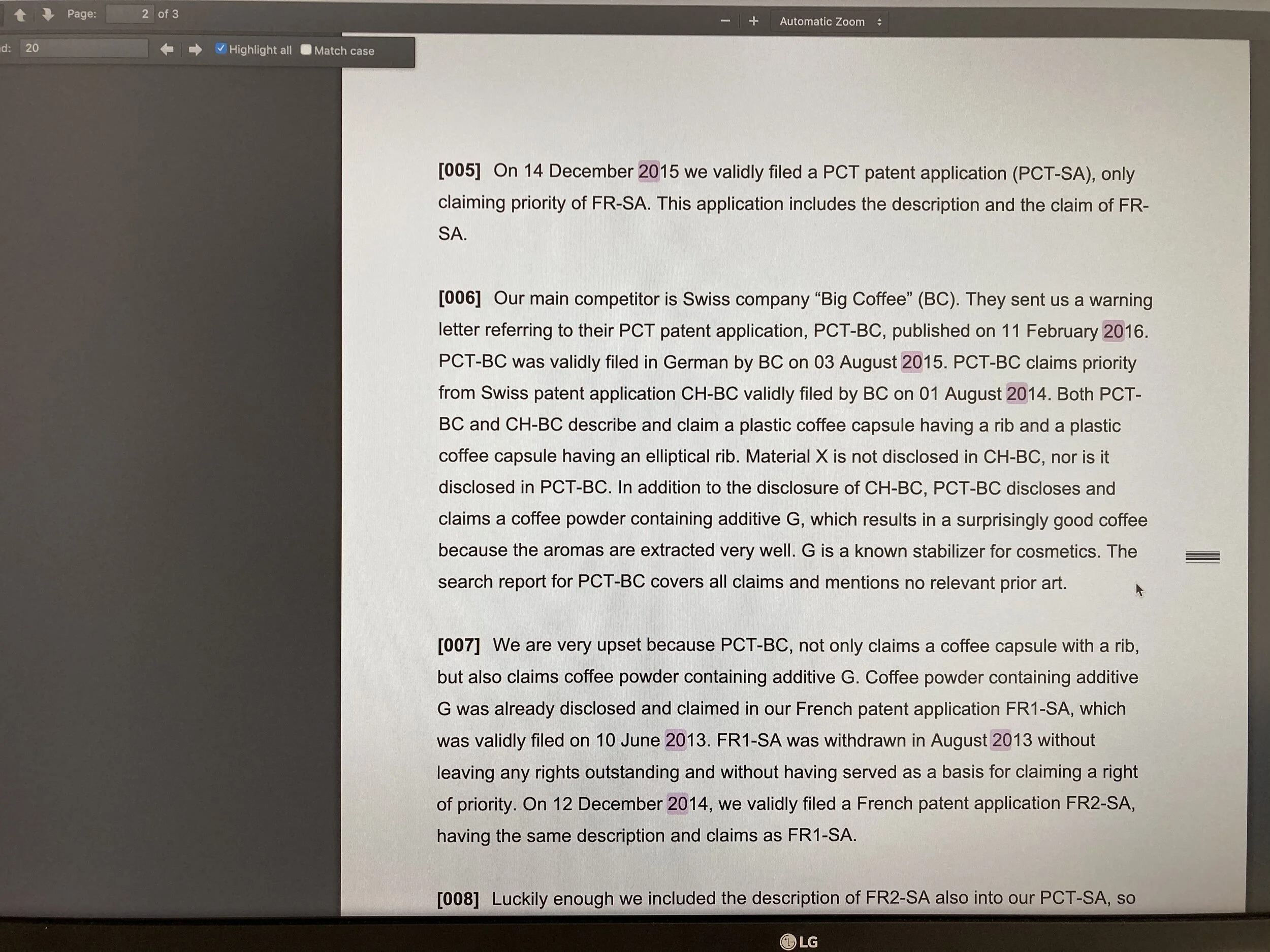Paper D2 methodology and updated D2 table
I have already shared my D2 methodology, but I wanted to do an updated summary, so here we go!
Firstly, as a reminder, in Paper D, there is nothing you can print, and you need to have your own calendar. (I prepared a calendar for you, see here.) Therefore, I suggest doing previous D2 exams without printing the letter.
For the D2 part, it is very useful to have a template that you can fill with the dates and information from the client’s letter. This way, the analysis is a lot easier. Although you cannot submit your table or get marks for it, it is still worth extracting the information from the letter to the table.
I shared my table before, but I have now added more columns for the disclosure, as 5 columns were often not enough. Please feel free to download my template by clicking on the button below. (You need to print it on A3 paper).
D2 methodology step-by-step
1. Questions
Check the questions at the end of the letter and then copy them into WISEflow editor. This way, you can often find out the list of inventions/applications too.
2. Dates
Copy all the dates from the letter to a piece of paper, then add them to your table in chronological order.
You can use Ctrl+F (Win) or Cmd+F (Mac) and search “20”, and all dates will be highlighted in the document. This is probably the quickest way to collect all dates from the text. You can also search “19” for older publications, “ago”, “before”, “last”, because sometimes there are some additional dates (e.g. two weeks ago). However, most important dates will include the year starting with “20”.
3. Read whole text carefully and fill your table
Make notes of the legal issues, hidden questions and requests of the client you spot while reading. (E.g. “We are considering filing a new application…” –> You will need to mention this in your response, calculate a time limit and suggest a claim for that new application, even if not explicitly asked in the questions.) You can create your own checklist either directly in the editor or on a piece of paper.
You can also highlight important parts in the letter electronically, if you want, but you can also do the exam completely without highlighting, just using the table.
If you are a quick reader, you can read the letter again and check if you got everything right. (I usually only read the letter once.)
After finishing this step, you can use only your table (filled with the extracted information from the letter) to analyse the case and write your answer.
You should be able to complete steps 1-3 in 40-60 minutes, depending on the length of the text.
To give you an idea how a filled D2 table looks like, I took a photo of one of my tables (2015 Paper D2), see below.
4. Check your initial ideas in your reference book, if necessary (you can also do this later)
If you notice something that bothers you while reading the letter, you can immediately check it in your books so that you can stop thinking about that problem. For example, if an application was filed by a subsidiary of the previous applicant, you can quickly check whether that is the same applicant or not. (It is not 😀.)
5. Prepare a simple template in the editor so that you don’t miss any steps while writing your answer
See the image below to better understand what I mean. 🙃
6. Write your answer
While answering question 1 about the situation as-is, you will already have ideas for the improvements. I suggest taking notes about these improvements in your editor, below the question about improvements (that’s why making an outline with the questions is also very useful.)
To give you an example, if you see an application that was recently deemed withdrawn, and after your analysis you conclude that it could be novel and inventive, you will definitely want to request Further Processing (if possible).
In order to not forget suggesting this, you can immediately take a note of this improvement in the editor. Then, when you get to answering question 2 about improvements, you will already have your list of improvements in the editor. At that point, you don’t need to think about improvements anymore, just add more details to the points you already listed when analysing the situation as-is.
By the way, I have a summary of possible improvements you can use in a D2 exam. I suggest reading that list only after doing several D2 papers.
In the last question, you usually have to analyse the patent rights after the improvements. At this point, please do not forget the definition of patent. You cannot simply say that claim covering product X is granted so client is free to sell/produce/use/market product X. A patent does not give right to freely sell/produce/use/market a product but only to exclude others from selling/producing/using/marketing the patented product.
7. Check your notes about the legal issues and client's wishes to see if you covered everything
And that’s it! You finished the D2, congratulations! I hope this summary was useful!
Would you like to learn my D2 methodology and watch me do a Paper D2 in real time?




